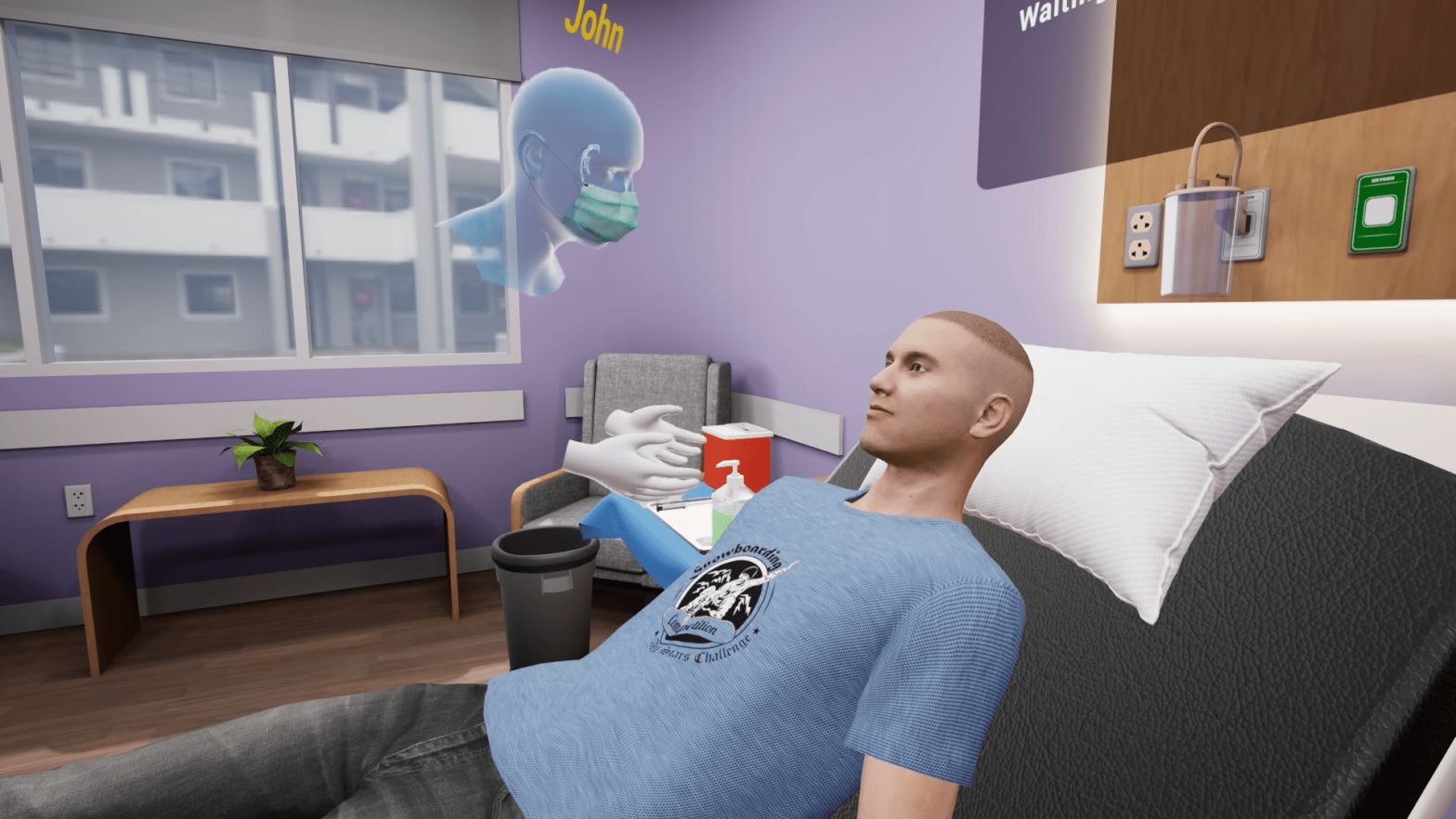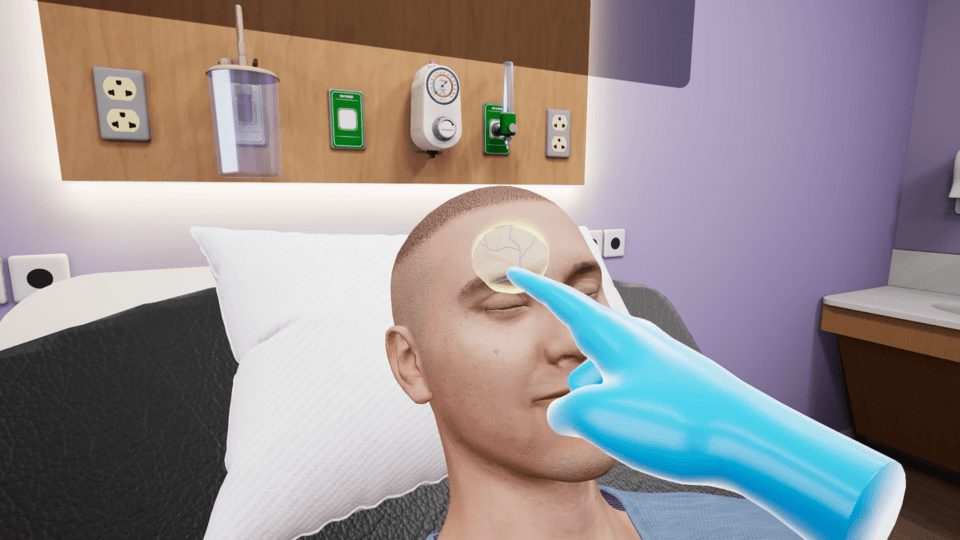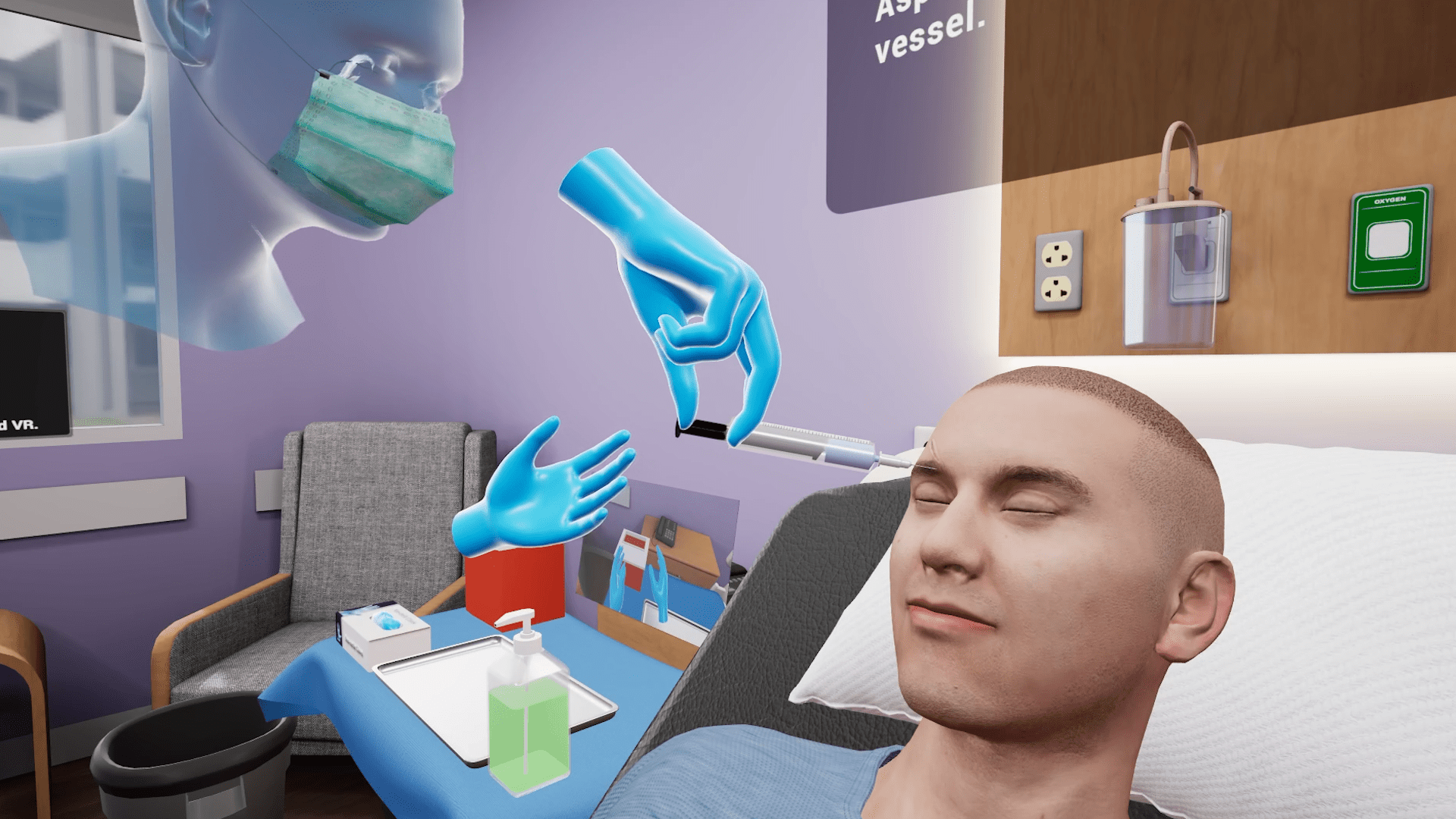Supraorbital Nerve Block
A supraorbital nerve block is done to provide immediate localized anesthesia. This could be done for a number of reasons. Could be anything from laceration to removal of foreign object. In this case, it is a laceration on the forehead.
This VR simulation for Supraorbital Nerve Block is designed to help practitioners practice performing the procedure in a virtual environment with a virtual patient. With both training and assessment modes, learners can perform the procedure and assess themselves on their performance.
- Identifying appropriate injection landmark
- Cleaning injection site using aseptic technique
- Inserting needle using clinically approved technique
- Performing test aspirate to ensure no return of blood

- American Society of Regional Anesthesia and Pain Medicine. (2023). Supraorbital nerve block.
Customize Your Program
Get rid of the editor. Adopt in-VR customization.
MedVR Education is bringing to you in-VR customization that will enable you to customize your procedural simulations by making selections from a range of feature choices.
- Select patient from a diverse background
- Choose preferred virtual environment
- Select equipment used in the procedure
- Modify difficulty level of the assessment mode
- …..many more to come

 Multi-playerSessions
Multi-playerSessions Physics-based Interactions
Physics-based Interactions
Core Skills Training

Performing Supraorbital Nerve Block
As a part of this Supraorbital Nerve Block procedure, the learner will begin by performing hand sanitization and preparing the injections for the procedure. After drawing up anesthetic into the syringe, an alcohol swab will be used to clean the injection side. Aiming towards the supraorbital notch, the needle will be inserted from lateral to medial. The learner will perform a test aspirate to ensure that there is no return of blood. To complete the procedure, the needle will be removed, the area massaged, and sharp items disposed in the sharps container. All necessary affordances are provided to complete the procedure with efficiency.
Training
With prompts, guidance and affordances learners are hand-held through the process to practice the procedure in a virtual environment with a virtual patient.
- Photorealistic virtual environment
- Physics-based interactions
- Detailed instructions
- Adequate affordances to assist in task completion

Assessment
Test acquired skills to perform the procedures from start to finish without prompts. An incorrect step will take the learner back to the start to start afresh.
- Live scoring
- Instant feedback
- Adequate affordances for efficient performance
- Time tracking to monitor activity completion







